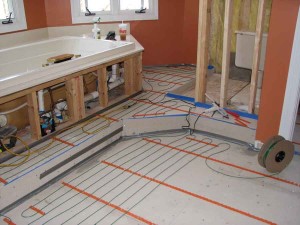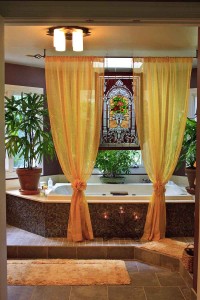
It’s common to think of interior design as synonymous with as interior decorating. The terms are used almost interchangeably, but there are significant differences between the two. Interior design, unlike architecture or engineering, is not a licensed profession. That means that anyone can use the title “interior designer,” regardless of training or credentials. Many states, including Virginia, have a legal certification act for interior designers. In Virginia, a “certified interior designer” may use the appellation “CID.” This designation identifies individuals who meet rigorous educational and practice standards, and who have passed a thorough professional exam. Professional level membership in industry organizations such as the American Society of Interior Designers (appellation “ASID”) requires the same exacting standards.
 Although there is much in common between the many tasks of an interior designer and a decorator, an interior decorator primarily works with color, materials, furnishings, window coverings, art and accessories. Many interior designers perform these services, but they may also prepare designs, floor plans, elevations, lighting layouts, and myriad details from concept through permit drawings for additions, renovations, outdoor living, and more complex construction projects. Some projects may benefit from or require a team approach which might include an architect or engineer.
Although there is much in common between the many tasks of an interior designer and a decorator, an interior decorator primarily works with color, materials, furnishings, window coverings, art and accessories. Many interior designers perform these services, but they may also prepare designs, floor plans, elevations, lighting layouts, and myriad details from concept through permit drawings for additions, renovations, outdoor living, and more complex construction projects. Some projects may benefit from or require a team approach which might include an architect or engineer.
Landscape design and landscape architecture also vary in terms of work tasks and credentials. Landscape architecture is a licensed profession, and no one without a license may use the title “landscape architect” (appellation “LA”). Landscape designers may be certified by the Virginia Society of Landscape Designers, using the appellation “VSLD.” Some landscape professionals may carry other credentials, such as certified horticulturist, arborist, naturalist, etc. Complex outdoor living spaces or very challenging site designs may require either a landscape designer or a landscape architect, depending on the intricacy of the project and the site conditions.
 Many landscape companies offer turnkey planting installations. As a rule of thumb, a good planting design should be sensitive to the site, include plants selected for their placement and ultimate mature size, be selected and located based on their needed conditions (sun vs. shade, etc.), and provide year-round seasonal interest. Any landscape design should be planned, planted, and maintained in a sustainable manner with responsibility to the environment.
Many landscape companies offer turnkey planting installations. As a rule of thumb, a good planting design should be sensitive to the site, include plants selected for their placement and ultimate mature size, be selected and located based on their needed conditions (sun vs. shade, etc.), and provide year-round seasonal interest. Any landscape design should be planned, planted, and maintained in a sustainable manner with responsibility to the environment.
Related posts:
Tags: architecture, interior design, space planning
Leave a Reply Cancel reply

More Story
Build The Right Team
If you own a home you undoubtedly have projects that need doing around the house. Large or small, home improvement projects...Subscribe to the Blog
Site Menu
Recent Posts
- What's a gardener to do... in winter?
Jan 22, 2024 - New Year, New Plans!
Jan 1, 2024 - The Thoughtful Host
Dec 7, 2023
- What's a gardener to do... in winter?

You may link to a post or take quotes if credit, including a link back, is given.
You may not take entire posts or photographs without asking.
Permission may be requested using the contact form .
















Share On